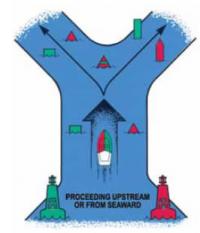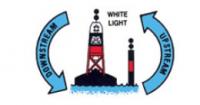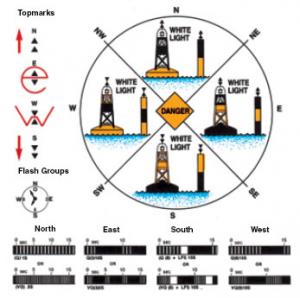Transport Publication TP 14070 E (2010)
- Table of Contents
- Document Information
- Who Should Read This Guide?
- Introduction
- Chapter 10
- Chapter 2
- Chapter 3
- Chapter 4
- Chapter 5
- Chapter 6
- Chapter 7
- Chapter 8
- Chapter 9
- Chapter 10
- Chapter 11
- Chapter 12
- Chapter 13
- Chapter 14
- Chapter 15
- Chapter 16
- Chapter 17
- Appendix 1
- Appendix 2
- Appendix 3
- Appendix 4
- Appendix 5
Navigation Equipment
Vessels must carry the navigation equipment required by the Canada Shipping Act, 2001 and its regulations. See Table 5-1, Required Safety Equipment, in Chapter 5. All devices and equipment on board – required or not – must be in good working order, and properly installed and situated.
Your equipment must be able to keep working under all environmental conditions likely to exist (such as vibration, humidity and change of temperature). You must also carry the manufacturer's operating and maintenance manuals, as well as spare parts, fuses and lamps for any navigating equipment you are required to have on board.
Charts and Other Publications
The Charts and Nautical Publications Regulations, 1995, require you to carry the most recent editions of charts, publications and documents published for your area of operation unless the person in charge of navigation has enough knowledge of shipping routes, lights, buoys and marks, navigational hazards as well as normal navigational conditions and weather patterns to ensure safe navigation.
If you are required to carry charts, you must also carry the tools you need to accurately determine the vessel's position and at least one pair of binoculars. Keep your charts up to date by subscribing to the Notices to Mariners (www.notmar.gc.ca/). For tips on both reading and updating nautical charts, go to http://www.chs-shc.gc.ca/index-eng.asp.
You can get Canadian nautical charts and publications from over 700 authorized Canadian Hydrographic Service (CHS) Chart Dealers across the country and around the world. For a list of authorized CHS chart dealers, visit www.charts.gc.ca, or email chsinfo@dfo-mpo.gc.ca.
Buoys
Buoys are indispensable guides to safe navigation. Below are descriptions and explanations of some of the most common buoys.
Lateral Buoys
Lateral buoys indicate the edge of a channel as well as direction.
Figure 11-1 Lateral Buoys
- PORT (green can)
- Keep this buoy on your port (left) side when moving upstream.
- BIFURCATION (red and green bands)
- You may pass this buoy on either side when moving upstream, but the colour of the top band will indicate the main or preferred channel.
- PORT (green pillar)
- Keep this buoy on your port (left) side when moving upstream.
- PORT (green spar)
- Keep this buoy on your port (left) side when moving upstream.
- STARBOARD (red spar)
- Keep this buoy on your starboard (right) side when moving upstream.
- STARBOARD (red conical)
- Keep this buoy on your starboard (right) side when moving upstream.
- STARBOARD (red pillar)
- Keep this buoy on your starboard (right) side when moving upstream.
Fairway Buoys
A fairway buoy marks safe water at landfalls, channel entrances or channel centres. When it is marking the middle of a channel, it should be kept to the port (left) side; otherwise, it may be passed on either side.
Figure 11-2 Fairway Buoys
Isolated Danger Buoys
An isolated danger buoy is moored on or above an isolated danger that has navigable water all around it. It may be used to mark natural dangers such as small shoals or obstructions such as wrecks. Consult the appropriate chart for more details, such as dimensions and depth of the danger.
Figure 11-3 Isolated Danger Buoys
Cardinal Buoys
A cardinal buoy indicates the direction to safe water (for example, a north cardinal buoy indicates that the safest water exists to the north).
Figure 11-4 Cardinal Buoys
DESCRIPTION
Yellow and black
White light – flashes characters indicated below (if equipped)
Two conical topmarks indicate direction
Black topmark cones point to the black portion(s) of the buoy
Lettered – no numbers
White retroreflective material
Take it with you: you can order free, waterproof quick reference cards that explain lateral buoys, standard day beacons, cardinal buoys and special buoys from the Transport Canada website. Contact us for Lateral Buoys and Standard Daybeacons ( TP 14541) and Cardinal Buoys and Special Buoys ( TP 14542).
More Information
To consult your local Transport Canada Centre, see Appendix 2.
-
Charts and Nautical Publications Regulations, 1995
http://laws.justice.gc.ca/eng/regulations/SOR-95-149/ -
Navigation Safety Regulations
http://laws-lois.justice.gc.ca/eng/regulations/SOR-2005-134/ -
Small Vessel Regulations
http://laws-lois.justice.gc.ca/eng/regulations/SOR-2010-91/ -
Cardinal Buoys and Special Buoys ( TP 14542)
www.tc.gc.ca/eng/marinesafety/tp-tp14542-menu-476.htm -
Lateral Buoys and Standard Daybeacons ( TP 14541)
www.tc.gc.ca/eng/marinesafety/tp-tp14541-menu-2082.htm
Transport Canada gratefully acknowledges having used some of the reprographic material from the Canadian Hydrographic Service.



